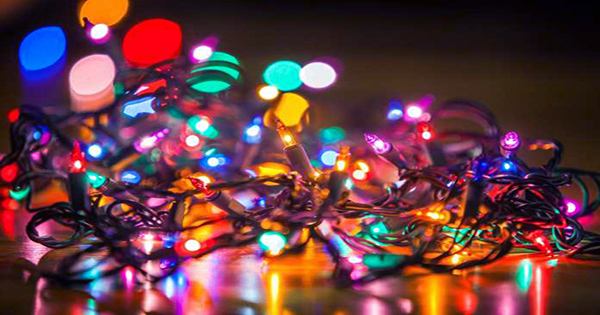Nature abhors a vacuum, according to Aristotle, but we now know better: what Nature actually despises is order, and do not imagine for a second that Mother Nature takes a rest over the holidays. Even over the holidays, the laws of physics may ruin our best-laid plans. Consider the use of Christmas lights. What do you notice when you unpack them in December after putting them away neatly in January? Consider the possibility that Christmas goblins are tangling up the lights in a twisted mess. The truth is better to that scenario — the second law of thermodynamics has struck once more.
That inexorable (or is it?) physics law deals with a quantity known as entropy, which is a measure of a system’s disorder. The entropy of an isolated system, such as our Universe, is continuously increasing.
As a result, systems tend to devolve into anarchy. Things break down, we get older, and Christmas lights become tangled up, even when they are properly packaged. Knotting, on the other hand, is not a simple process governed solely by chaos. Scientists have found some of the complicated mathematics behind it.
In specifically, a study published in the Proceedings of the National Academy of Sciences in 2007 looked at the idea of knotted threads when tossed about. The article, titled Spontaneous Knotting of an Agitated String, won the Ig Nobel Prize in Physics in 2008 for the two authors, Dorian Raymer and Douglas Smith.
The study looked at what occurs when you place a string in a box and rotate it. They examined strings of diverse lengths, as well as boxes of various sizes rotating at various speeds and with varying numbers of revolutions.
They discovered complicated knots in the string in the 3,415 trials they undertook, sometimes in as little as a few seconds did. A minimum length (46 centimeters/18.124 inches) and adequate room to rattle about in the box are important considerations.
The study’s most intriguing aspect is that the motions not mathematically guided by a series of random steps. As previously stated, it was not merely chaos; however, chance had a role in the development of knots. The strange behavior of strings in a box is not limited to mathematical experiments or tangled Christmas lights.
It has ramifications for the knotting of genetic information within certain viruses, as well as the fact that the umbilical cord is difficult to knot. Remember the profound ties to the deep, the chaotic, the complicated, and the perplexing principles that govern our universe as you turn out the lights.
















